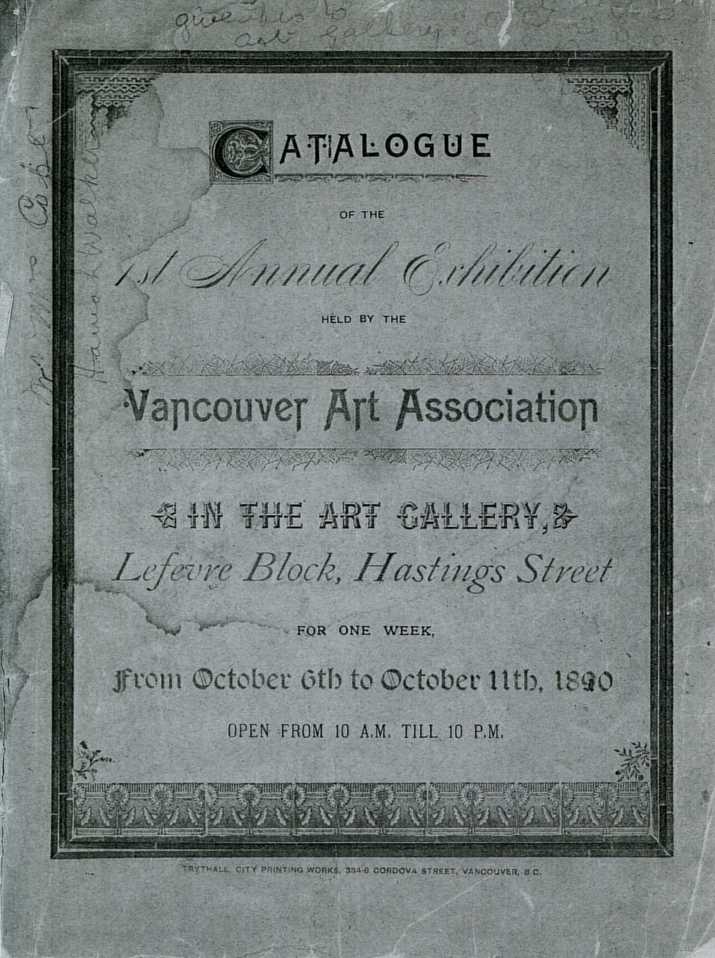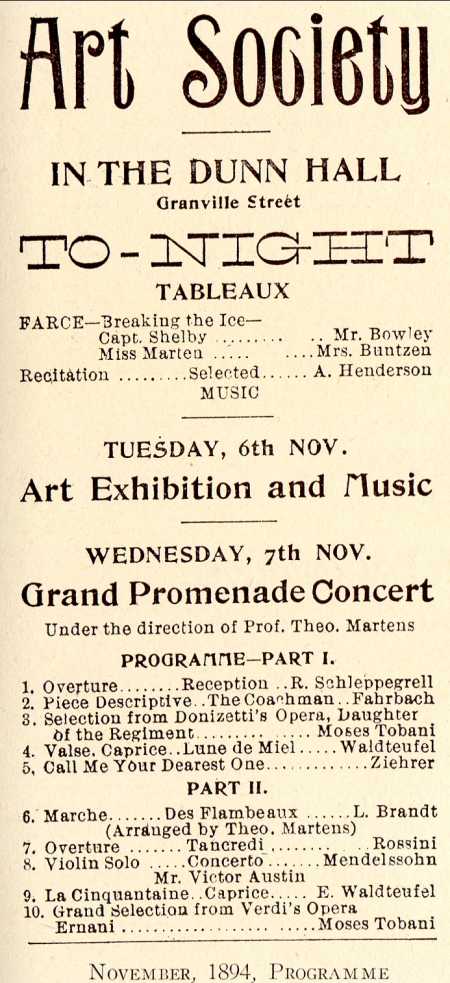
| BRITISH COLUMBIA ARTISTS |

In the October 10th, 1894, number of the same publication the thing has become an assured fact: "The rooms of the Art, Historical and Scientific Association were crowded last night upon the occasion of a very successful concert . . . . In two weeks the Lieut.-Governor will open the Art Exhibition." A copy of the programme on this occasion shows that the affair was prepared with some care, with evening programmes to add to the interest.

In Lord Aberdeen's speech, on the occasion of the opening of the exhibition and the presentation of an address, may be found some remarks which still apply to the City-By-The-Silvery-Sea: "I will not refer in detail to any of the subjects alluded to in this address, except to say that, as suggested in the address, the beauty of these regions renders it specially incumbent upon all to do their best to promote a love of nature and a true admiration of the cultivation of Art in its fullest sense. Of course the cultivation of Art is associated with the prevalence of peace. A place dedicated to the promotion of Art is a temple of Peace . . . ."
The first signature in the distinguished guest book of the Art, Historical and Scientific Association is that of Lord Aberdeen, followed by that of Lady Aberdeen, Lady Marion Gordon, and in a boyish hand of the Hon. Archie Gordon. On the reverse side of the page is found the signature of the next distinguished visitor, Li Hong-Chang.
From the financial side the exhibition was not a success, in spite of the efforts of the committee to supply additional attractions in the way of concerts. From this time, however, the collections for the museum were carried on perseveringly. Although there was thus the two additional objects of the Association, it was for years after referred to as the Art Association. As late as 1901 it was still referred to by this name. The first contribution to the Art section of the Museum was made by T. Mower Martin, November 29th, 1898, who presented a specimen of his own work, "Mountains Near Banff," which still hangs in the Museum.